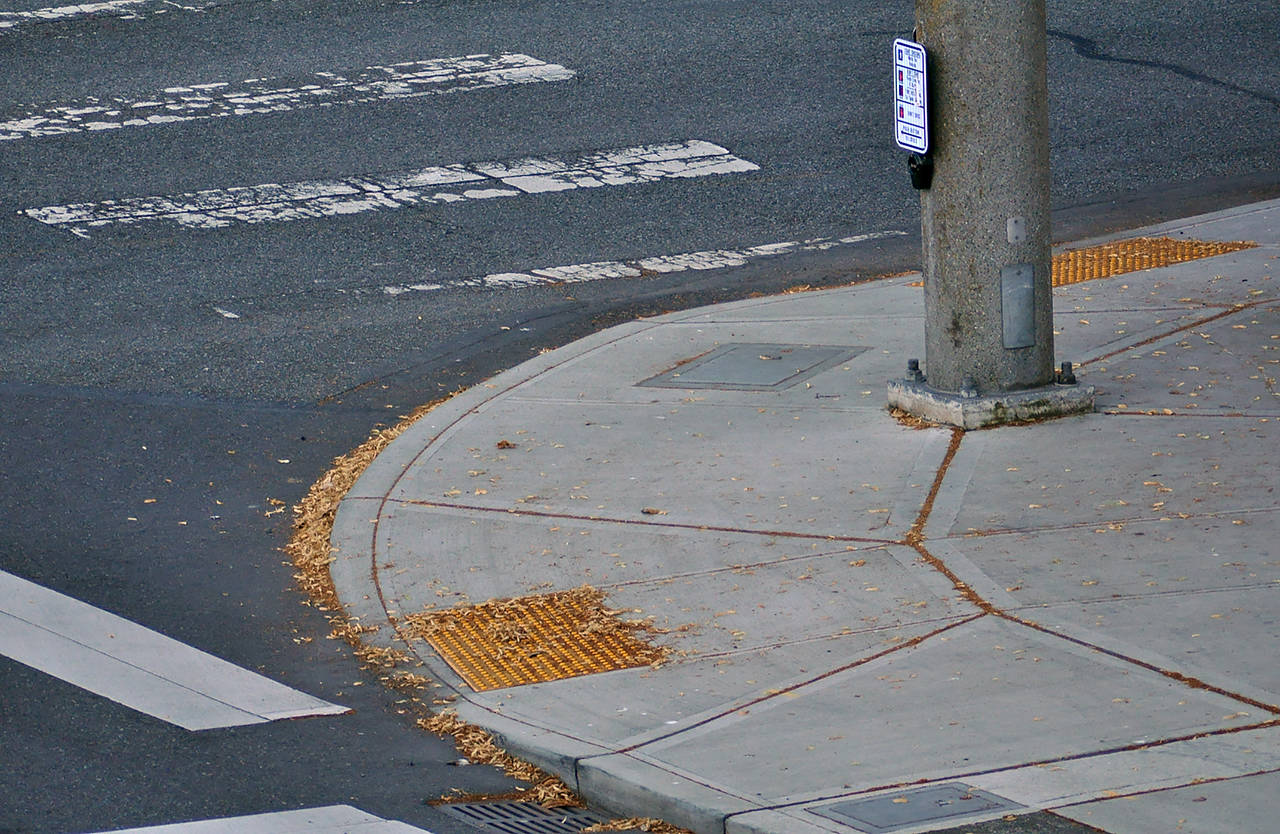Better sidewalks, crosswalks that make noise and flash, kneeling buses, more ramps and elevators.
We have the Americans with Disabilities Act, passed 30 years ago Sunday, to thank for advancements in how people can get around.
“It’s a huge milestone,” Northwest ADA Center assistant director Mell Toy said. “Looking back on the last 30 years, one thing I believe is true is the ADA has become a household name.”
The Northwest ADA Center works with businesses, governments and people to understand the ADA and incorporate accessibility into their lives. It’s not a compliance or enforcement watchdog.
The landmark civil rights legislation ensures that people have equitable access to government and publicly funded spaces. That’s why cities, counties and state governments make curb ramps with gentler slopes and accessible road crossings that beep or click.
“For 30 years, more Americans have been able to take advantage of basic freedoms because of the ADA,” Snohomish County Executive Dave Somers said in a statement. “It is one of the pillars of civil rights and represents how protecting the rights of some advances freedoms for all. Many have better access to jobs, transportation, facilities, and accommodations because of those who fought for and passed the ADA. To prevent discrimination and ensure there is equity for all are goals we continue to advance in Snohomish County.”
The county’s public works department estimates the cost of resolving all of the access barriers at $1 billion. The work will take decades more.
Changes have been slow and, in some places, inconsistent.
“From the county’s perspective, there were some fits and starts because we had to convince our elected officials at the time to budget this on an annual basis,” Snohomish County Public Works deputy director Doug McCormick said.
Over time, the accepted standards changed, as well. What once passed for an accessible building may no longer be up to code.
That’s why governments make an ADA transition plan, a document with an inventory of an agency’s facilities, barriers to access and long-range work plans.
“It’s not a building code,” Snohomish County Public Works transportation specialist Ryan Peterson said. “It’s taken many, many years for everyone to figure out how to apply this civil rights law, and apply that to curb ramps and sidewalks.”
Snohomish County has a 12-year plan to resolve known problems. It is subject to the county budget, so funding can vary. But there’s generally $600,000 every year as part of the county’s road work for ADA projects, plus around $500,000 for staff whose time largely is dedicated to accessibility, McCormick said.
But not everyone can get around only using sidewalks.
Community Transit’s contracted dial-a-ride transit (DART) demand and service have fluctuated over the past decade.
The agency uses 52 DART/paratransit vehicles and saw an overall drop in average weekly ridership the past 10 years. Fewer riders means the cost per passenger increased as fare box revenue declined.
As the county population ages, especially the boomers, that need will likely increase again.
“We say at our office that the disability group is the largest minority group in our country, and it’s one that you can join at any time,” Toy said. “It reminds us that there is no longer this otherness when we talk about disability. We’re talking about our grandparents, our neighbors, our co-workers, our children. If we live long enough, we’re talking about ourselves, too.”
In Snohomish County, 8.2% of people under 65 have a disability, according to U.S. Census data. By another measure, 12,102 people in the county received disability benefits in 2018, according to Social Security Administration data.
Have a question? Email streetsmarts@heraldnet.com. Please include your first and last name and city of residence.
Talk to us
> Give us your news tips.
> Send us a letter to the editor.
> More Herald contact information.

























